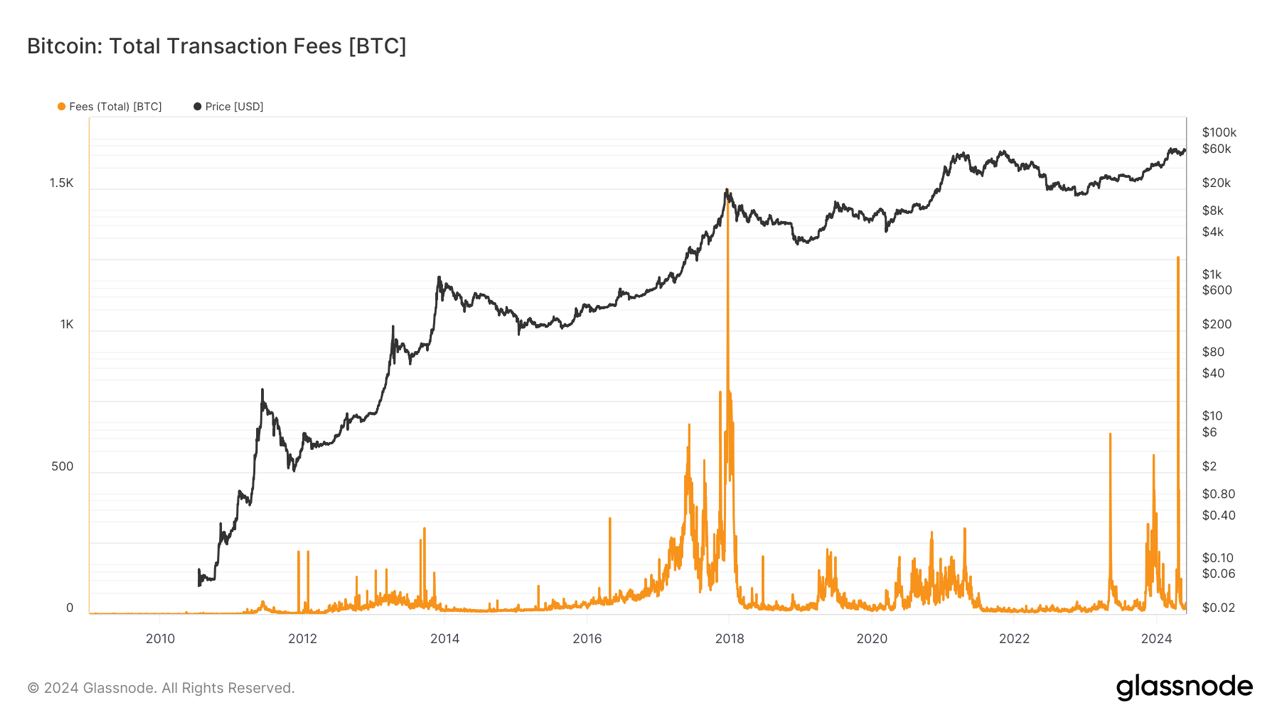
Surging Bitcoin Fees Post-Halving: New Revenue Dynamics for Miners
By: TOGRP
June 2, 2024 12:14 AM / 0 Comments Bitcoin Banking and Finance ZentaNewsDesk Breaking News International News
Following the recent Bitcoin halving event, the cryptocurrency world has observed a significant surge in transaction fees. This increase has prompted a shift in revenue dynamics for Bitcoin miners, necessitating a closer examination of its implications and future trends
Understanding Bitcoin Halving
What is Bitcoin Halving?
Bitcoin halving is a predetermined event that occurs every 210,000 blocks, roughly every four years, where the reward for mining Bitcoin transactions is cut in half. This mechanism is designed to control inflation and extend the distribution of new Bitcoins until approximately the year 2140.
Impact on Miners
Immediately following a halving, miners earn 50% fewer Bitcoins for verifying transactions. This reduction can initially lead to decreased profitability unless compensated by other factors such as increased Bitcoin value or higher transaction fees.
Surge in Transaction Fees
Reasons for the Increase
Post-halving, as the reward decreases, transaction fees have become a more crucial part of a miner's income. These fees are paid by users to prioritize their transactions on the network. The surge can be attributed to increased network congestion and users willing to pay more to expedite their transactions.
Analysis of Fee Increases
Data from recent weeks shows a marked increase in average transaction fees, suggesting that users are competing for limited space in mined blocks. This scenario is partly due to the reduced rate of block rewards prompting miners to prioritize higher-fee transactions.
New Revenue Dynamics for Miners
Shifting Incomes
With the adjustment in block rewards, miners are increasingly reliant on transaction fees as a substantial part of their revenue. This shift necessitates more efficient mining operations and may influence the strategies employed by miners to maximize their earnings.
Long-term Implications
If the trend of increasing transaction fees continues, it could lead to further centralization of mining power. Larger mining pools with more resources could dominate the space, as smaller operators may find it difficult to sustain profitability.
Challenges and Opportunities
Market Adaptations
The current situation presents both challenges and opportunities for miners. Adapting to these new dynamics involves optimizing mining operations and exploring new technologies to reduce costs and improve efficiency.
Potential for Innovation
This environment could also spur innovation in transaction fee estimation and blockchain scalability solutions, potentially leading to more sustainable practices within the industry.
Conclusion
The post-halving surge in Bitcoin transaction fees represents a significant shift in the revenue model for miners. As the landscape evolves, both challenges and opportunities will shape the future of mining and the broader Bitcoin ecosystem.
FAQs
-
What causes Bitcoin transaction fees to increase? Fees increase due to higher demand for transaction processing and reduced space in blocks, especially after a halving reduces mining rewards.
-
How does halving affect miners' revenue? Halving decreases block rewards, making transaction fees a more vital part of miners' income.
-
What are the long-term effects of increased transaction fees? Long-term effects could include the centralization of mining power and increased pressure on miners to optimize and innovate.
-
How can miners adapt to these changes? Miners can adapt by improving operational efficiency, investing in better technology, and participating in larger mining pools.
-
What innovations could arise from this situation? Potential innovations include more accurate fee estimation tools and enhanced scalability of the Bitcoin blockchain.
